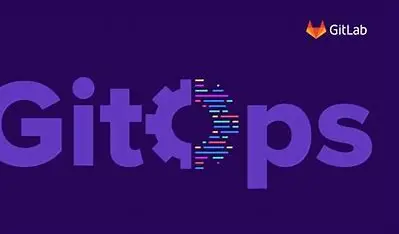GitOps: Revolutionizing DevOps with Declarative Infrastructure and Automation

As DevOps practices continue to evolve in 2025, teams are looking for methods that bring even more automation, consistency, and control to their infrastructure and deployment processes. Enter GitOps — a paradigm that uses Git as the single source of truth for infrastructure and application delivery.
GitOps takes familiar tools and workflows from development and applies them to operations. It's not just a buzzword; it’s quickly becoming a best practice for teams managing Kubernetes, microservices, and multi-cloud environments.
What is GitOps?
GitOps is a set of practices that uses Git repositories as the source of truth for infrastructure and application configurations. It leverages declarative infrastructure (e.g., Kubernetes manifests or Terraform files), pull-based automation, and continuous reconciliation to manage system state.
Instead of manually applying configurations or running scripts, teams commit changes to a Git repository. An operator or controller (such as ArgoCD or Flux) continuously monitors the repository and applies those changes to the target environment.
How GitOps Works
Here’s a simplified GitOps workflow:
Declare desired state in Git using YAML, HCL, or JSON (for example, Kubernetes deployment manifests).
Push changes to Git, which becomes the source of truth.
A GitOps controller (e.g., ArgoCD) detects the change.
The controller applies the change to the environment automatically.
The controller continuously monitors for drift and re-applies the correct state if needed.
This pull-based model ensures environments stay consistent with Git history, enabling easier rollbacks and disaster recovery.
Key Benefits of GitOps
1. Single Source of Truth
Git holds all infrastructure and deployment configurations. This eliminates ambiguity, reduces human error, and improves collaboration across Dev and Ops.
2. Auditability and Compliance
Every infrastructure change is a Git commit. You get a complete history of who changed what and when, which is essential for audits, compliance, and security reviews.
3. Rapid, Reliable Rollbacks
With Git history, reverting to a previous version is as easy as reverting a commit. No more trying to manually undo changes in a cloud UI.
4. Enhanced Collaboration
DevOps teams can collaborate via pull requests and code reviews — the same workflows they use for application code.
5. Improved System Stability
Automated reconciliation ensures infrastructure doesn’t drift over time. If someone makes an unauthorized change, GitOps controllers will roll it back to the desired state.
GitOps vs Traditional DevOps
Feature Traditional DevOps GitOps Configuration source Scripts / tools / manual Git repository Deployment method Push via CI or manual Pull via GitOps operator Rollback Manual scripts or tools Git revert + auto sync Audit trail Often separate or partial Fully visible in Git history Consistency Risk of drift Self-healing & declarative
Popular GitOps Tools in 2025
Tool Description ArgoCD Declarative GitOps for Kubernetes; visual UI Flux Lightweight, Git-native GitOps operator Kustomize Kubernetes configuration customizer Helm Kubernetes package manager used with GitOps Terragrunt Wrapper for Terraform in GitOps workflows
ArgoCD continues to lead in enterprise GitOps adoption due to its support for multi-cluster deployment, access controls, and integration with CI tools.
Best Practices for GitOps Adoption
Keep Git organized: Use separate repos or clearly defined folders for apps, clusters, and environments.
Use branches and tags: Manage promotions across environments (e.g., dev → staging → prod).
Automate CI processes: Use CI pipelines to validate configs before they reach GitOps CD.
Secure your Git repos: Git becomes critical infrastructure. Secure it with RBAC, 2FA, and access controls.
Monitor and alert: Integrate GitOps tools with observability platforms like Prometheus and Grafana.
Real-World Use Cases
Multi-team collaboration: Each team manages their own apps via dedicated Git repositories.
Disaster recovery: Recreate entire environments by reapplying Git history to a new cluster.
Faster onboarding: Developers deploy services via PRs instead of waiting for ops tickets.
Multi-cloud consistency: GitOps makes infrastructure portable across cloud providers.
Challenges in GitOps
Learning curve: Teams must understand declarative infrastructure and Git workflows.
Secret management: Sensitive data must be handled securely, often with sealed secrets or external vaults.
Tool sprawl: CI/CD, GitOps, Helm, Kustomize, Terraform — managing them all needs planning.
Merge conflicts: If not managed properly, teams can step on each other’s toes in Git.
However, with the right structure and governance, GitOps dramatically improves delivery speed, reliability, and resilience.
Conclusion
GitOps is more than a buzzword — it’s a practical evolution of DevOps that brings version control, automation, and accountability into infrastructure and delivery. As teams embrace Kubernetes and multi-cloud, GitOps provides a scalable, repeatable way to manage modern systems.
With tools like ArgoCD and Flux, teams can deploy faster, recover quicker, and collaborate better — all by treating operations like code.
About Hexadecimal Software
Hexadecimal Software is a leading expert in modern software development practices. From implementing GitOps and cloud-native DevOps pipelines to automating infrastructure across AWS, Azure, and GCP — Hexadecimal helps teams build, deploy, and scale software faster and smarter.
Explore More on HexaHome Blog
Want more insights into DevOps, digital infrastructure, and technology’s impact on real estate? Visit the HexaHome Blog, your trusted resource for blending smart tech with real-world applications.
